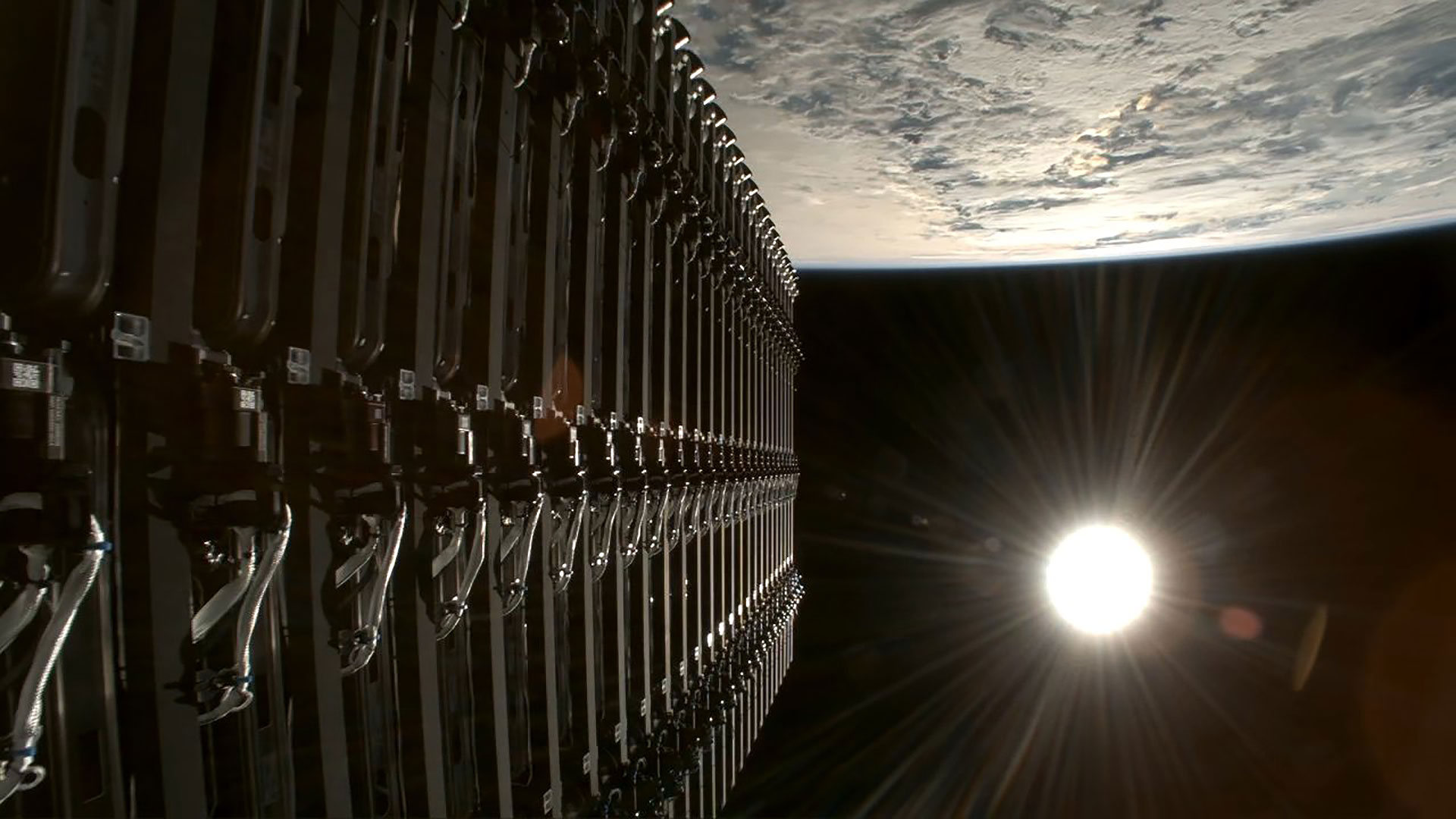The Power of Light: An Airborne Laser for Missile Defense

The U.S. military is gearing up to test what might be the ultimate version of laser tag.
With a successful ground test in the bag, the Missile Defense Agency is pushing forward with plans for an Airborne Laser (ABL), a Boeing 747 freighter aircraft with a laser-tipped nose designed to destroy ballistic missiles as they rocket through the sky.
The defense system's primary weapon -- a megawatt-class chemical laser beam -- passed an initial ground-based test last week and a number subsystems have been integrated into the ABL aircraft, Missile Defense Agency (MDA) officials told SPACE.com. If all goes well, a integrated prototype of the Airborne Laser will soon be shooting down missiles in tests over the Pacific Ocean.
"This is a wonderful moment for the Missile Defense Agency and the proponents of a ballistic missile defense around the world," said Col. Ellen Pawlikowski, ABL program director, during a Nov. 12 statement announcing the successful ground-firing.
Under development since 1996, the $1.1-billion ABL project aims to use a powerful, turret-mounted laser to disable enemy ballistic missiles during their boost phase by heating a basket-ball sized portion of the projectile's skin until it buckles.
Because of it's speed-of-light ability to kill, the ABL is the only system under testing that is able to detect and engage enemy missiles in their most vulnerable boost phases, MDA Airborne Laser officials said in response to written questions.
The Missile Defense Agency and U.S. Air Force is working in tandem with Boeing, Northrop Grumman and Lockheed Martin to develop the flying laser system. Boeing is providing the aircraft, battle management and system integration, while Northrup Grumman has developed the laser and Lockheed Martin the weapon's flight turret.
Breaking space news, the latest updates on rocket launches, skywatching events and more!
Some ABL developers have said integrated flight tests could occur by the end of the year. In a Nov. 12 announcement, MDA officials said tests of the ABL's main laser would take several months, as engineers fine-tune the weapon and work to increase its firing time.
Lasers in the sky
While the primary weapon behind the ABL missile defense system is its Chemical, Oxygen, Iodine Laser (COIL), the aircraft is equipped with three other lasers and six infrared sensors that detect, track and target enemy targets. None of the ABL lasers -- including its primary weapon -- are visible to the naked eye, though MDA officials said they could be imaged in the infrared spectrum.
Six COIL modules -- each the size of a Chevy Suburban sport utitlity vehicle set on end -- work together to produce ABL's megawatt energy beam, which set fire to dust particles as it burned into a metal wall during a Nov. 10 ground test at Edwards Air Force Base in California. The entire test lasted just a fraction of a second.
"What's important is that the COIL produced photons," Pawlikowski said. "This proves the laser hardware is ready to go."
The COIL system is fueled by a syrupy mix of hydrogen, oxygen and salts that combine to make Basic Hydrogen Peroxide, a volatile compound about 20 times more viscous than water, MDA officials said.
Battle management
Picking the most threatening target from a group of missiles, destroying it and moving on to the next one during a battle would have to occur faster than human gunners could operate, MDA officials said.
MDA designers anticipate enemy missiles to travel an average of about 4,000 miles (6,437 kilometers) an hour, and require a firing system capably of destroying those targets from distance of 100 miles (160 kilometers).
Instead, a computerized battle management system developed by Boeing controls the system, with human weapons crewmembers setting operational limits and providing any necessary mission modifications in flight. The system has successfully tracked Minutemen 2 and Lance missiles, as well as the afterburner plumes of F-16 jets.
MDA officials said the first ABL aircraft will serve as a research and development prototype, though it may have some "residual operational capability" once testing is complete.
Building the turret
Once ground tests are completed, the COIL modules will be installed in the aft end of the ABL aircraft, which Boeing engineers have extensively modified to handle the missile defense system. MDA officials said aircraft engineers left almost no part of the freighter untouched during its two-year refitting.
Perhaps the aircraft's most noticeable outward change to Boeing's 747-400 freighter is the bulbous turret that houses a 5-foot (1.5-meter) telescope serving as the exit point for the ABL weapon.
Designed to whip around and target enemy missiles, the ball-shaped turret is 10 feet (3 meters) in diameter and housed in an assembly that stretches 14 feet (4.2 meters) long, said Paul Shattuck, ABL technical lead at Lockheed Martin, in a telephone interview.
Composite materials keep the turret's weight to about 11,000 pounds (4,989 kilograms) which while heavy is much less than if it were built out of aluminum or other traditional aircraft materials, he added.
"This is all first-of-a-kind hardware," Shattuck said. "I'm excited and I can't wait to get it in the air."
- Military Space: Archive of SPACE.com Stories

Tariq is the award-winning Editor-in-Chief of Space.com and joined the team in 2001. He covers human spaceflight, as well as skywatching and entertainment. He became Space.com's Editor-in-Chief in 2019. Before joining Space.com, Tariq was a staff reporter for The Los Angeles Times covering education and city beats in La Habra, Fullerton and Huntington Beach. He's a recipient of the 2022 Harry Kolcum Award for excellence in space reporting and the 2025 Space Pioneer Award from the National Space Society. He is an Eagle Scout and Space Camp alum with journalism degrees from the USC and NYU. You can find Tariq at Space.com and as the co-host to the This Week In Space podcast on the TWiT network. To see his latest project, you can follow Tariq on Twitter @tariqjmalik.
